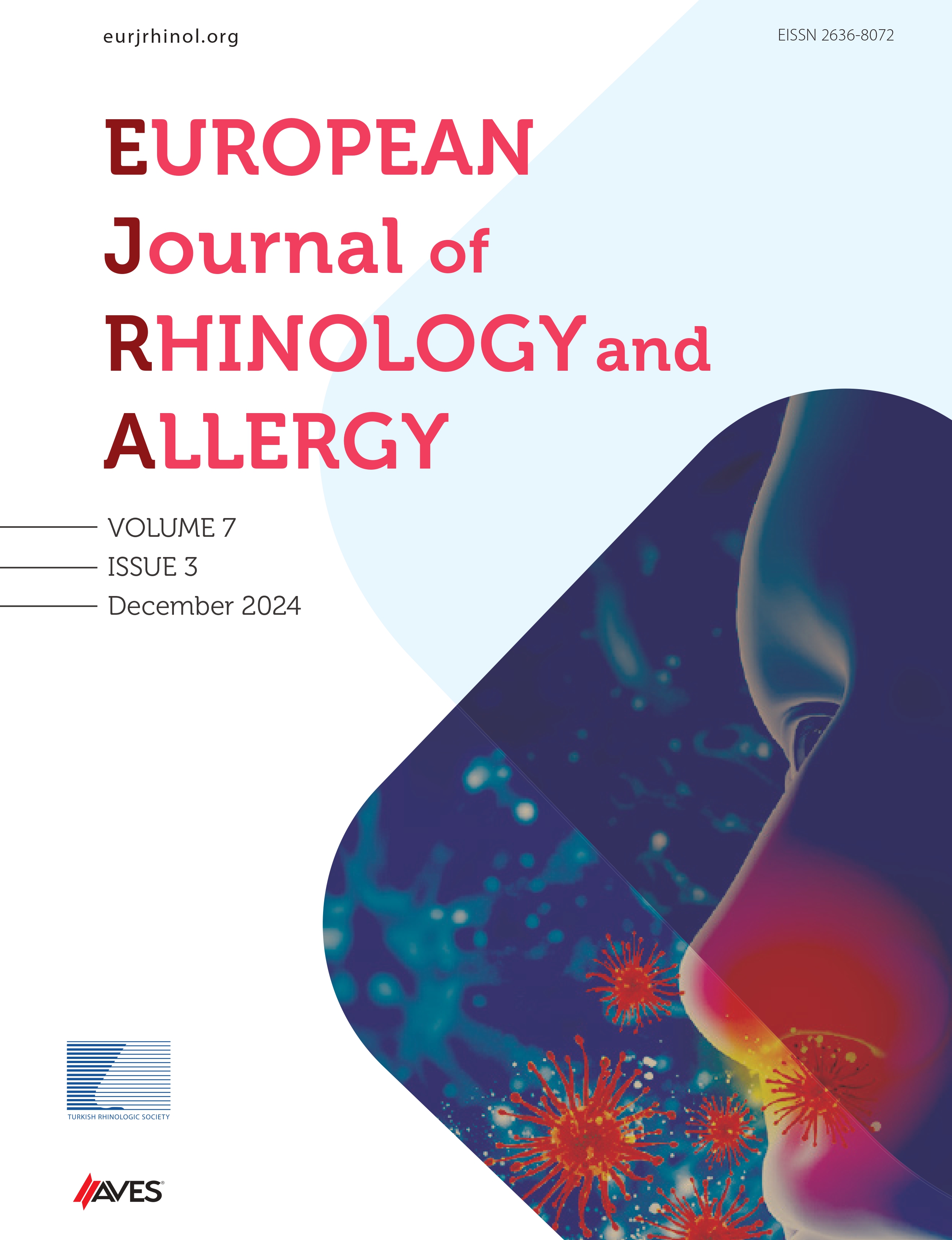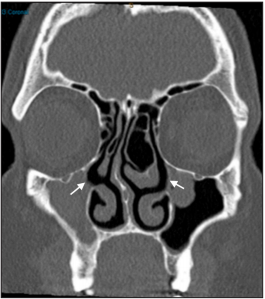Chronic maxillary atelectasis (CMA) is an underdiagnosed condition that can occur bilaterally and may lead to significant complications. An accessory maxillary ostium (AMO) is a defect in the posterior fontanelle that is associated with maxillary sinus pathology. We present a case of a 47-year-old man with sinonasal symptoms. Nasendoscopy demonstrated bilateral lateralized uncinate processes. Radiological findings were consistent with a diagnosis of bilateral stage II CMA, with the left side less atelectatic than the right and only partially opacified. The patient was treated surgically with bilateral uncinectomy and maxillary antrostomy. Intraoperatively, an AMO was visualized on the left. The main theory regarding the etiology of CMA is sustained obstruction of the ostiomeatal complex resulting in negative intra-sinus pressures and subsequent atelectatic remodeling of the antral walls. Our patient had an AMO on the left side, which was also the side of reduced severity of both symptoms and radiographic findings. We propose that the patient initially had bilateral CMA, with subsequent development of a left AMO, which halted further progression of the disease on this side. This case suggests that an AMO can develop or enlarge and supports the notion that CMA is caused by negative intra-sinus pressures. Further research is required to establish the detailed etiology of CMA.
Cite this article as: Ho JPK, Wong E, Singh NP. Bilateral Chronic Maxillary Atelectasis with a Unilateral Accessory Ostium. Eur J Rhinol Allergy 2020; 3(1): 23-5.

.png)

.png)
